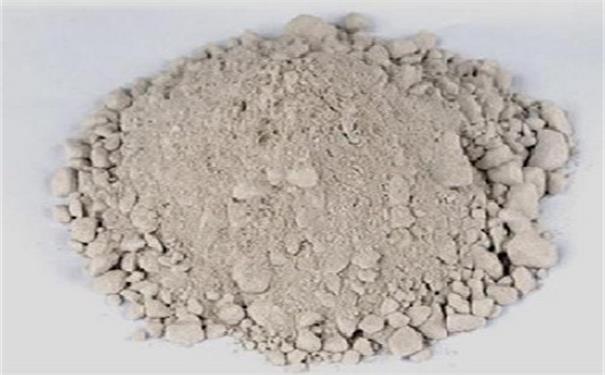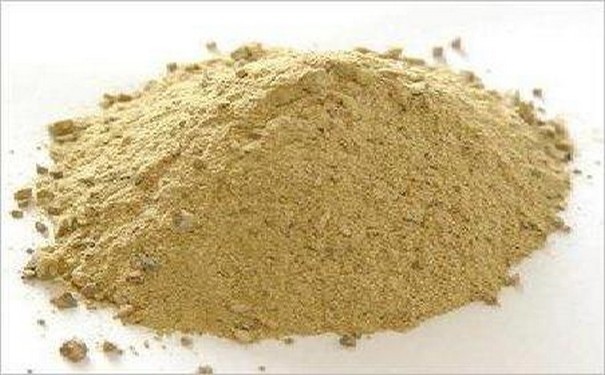Cause of hornet's nest in refractory castable
2020-07-20 14:25:19
The bleeding of refractory castable refers to the phenomenon that during the period from the completion of casting to the beginning of condensation of castable, suspended solid particles sink under the action of gravity, mixing water is squeezed and rises, and finally precipitates from the surface.

One: three phenomena of the hydration of refractory castable
Refractory castable is made of refractory aggregate, powder, binder and admixture by water stirring and hardening.
But there are also uneven conditions: first, the aggregate sinks, slurry rises (also known as the flood);
The second is the slurry sinking, aggregate floating;
Three is the water floating out, that is, bleeding.
The direct cause of the non-uniformity is the settlement or buoyancy caused by the different density of each component. The first two cases directly lead to the macroscopic non-uniformity of the castable, while the latter is still uniform on the macro level, but will lead to the non-uniformity of the refractory castable surface and local internal non-uniformity.
According to the existing state of water in refractory castable, it can be divided into binding water, wetting water and free water.
The combined water cannot be replaced by the adjacent water, nor overflow the pouring body;
When the refractory castable is added with water, the water wets the surface of the dry material, and this part of the water cannot overflow the pouring body, but can be replaced by the water in the adjacent part. This part of the water is defined as wetting water.
And the other water in the castable is called free water, in the refractory castable filling pores and lubrication, this water and solid materials are less connected, can overflow the castable, the formation of refractory castable bleeding phenomenon.
It takes a long distance for water to escape from the inside of the pouring body to the surface, just as it does from a bent micropipe to the surface.
If the material particles can achieve the most compact accumulation, the gap is small, the water secretion needs to go through a long distance, will reduce the bleeding scenery;
If the bleeding channel is blocked, the bleeding will be reduced.
Two: the effect of bleeding on the performance of refractory castable
The pouring water of refractory castable will lead to the formation of floating slurry layer on the surface. When the floating slurry layer thickens due to water loss and loses its fluidity, the strength development is not enough to resist the tensile stress caused by subsidence or plastic shrinkage, many cracks will occur on the surface of pouring body.
And inside the casting body, secrete water rising in the casting produces many of the content of the gelled material is less secrete water channel, at the same time because of the relative displacement of the particles, coarse grain sinks gradually to achieve stable castable is close-grained, and is easy to form at the bottom of the coarse grained water rich gelled material laitance, become void after the laitance precipitation water loss.
The slurry carried by the bleeding makes the composition inside the pouring body uneven.
The bleeding channel and coarse particle aggregation change the pore size and distribution in the castable, and then affect the performance of the castable.
Cause of hornet's nest in refractory castable
Three: the factors that affect the water of refractory castable
The bleeding of refractory castables is related to many factors, such as the choice of raw materials, particle size distribution, construction process, setting and hardening time of materials, etc.
The velocity of particle movement is proportional to the square of particle size, proportional to the density difference between the particle and the castable, and inversely proportional to the viscosity of the castable. Therefore, the larger the particle size, the more serious the bleeding of the castable, the greater the density difference between the particle and the castable, the more serious the bleeding, the smaller the viscosity of the castable, the more easy the bleeding.
3.1 Influence of molding process on bleeding water
In the construction process, the castable is in a fluidified state, at this point, the free water under the pressure, is easy to overflow, therefore, should be reasonable control of the vibration time, vibration to the surface of the pouring slurry and most of the gas can be discharged, avoid the vibration time is too long.

3.2 Influence of setting and hardening time on bleeding
The pouring water of castable usually appears within 30 min after the completion of molding, but there are also occurrences of bleeding after 60 min or even 90 min after the completion of molding.
The reason is related to the admixtures used in the materials.
The admixture that castable chooses commonly has dispersant agent, accelerant and retarder, the dispersing agent that has retarder property, also has the dispersing agent that promotes coagulate property, have alone add, also have compound add.
In any case, the first need to ensure that the dispersion of water reduction effect.
For the former 30 Rain, which shows bleeding, it is related to the selection of dispersant in addition to the particle grading. The dispersant has a poor effect and the slurry stays in the state of buoyancy for a short time, resulting in the sinking and bleeding of particles.
For the latter, the most important is related to the choice of coagulant, the slow coagulation causes the particles to sink and secrete water.
Therefore, under the premise of ensuring the application, the pouring water phenomenon can be effectively controlled by controlling the setting time.
Four: control refractory castable bleeding measures
4.1 Particle shape, size and particle gradation
The use of regular shape of the particles, reasonable selection of the maximum critical particle size, on the premise of not affecting other properties, select a reasonable particle size, increase the amount of fine powder or powder in the material to reduce the water demand of the material, while the micro powder can also improve the water retention of the material, so as to avoid the occurrence of bleeding material.
4.2 Construction
Strictly control the vibration time of castable to avoid too long vibration time.
Where conditions permit, the bleeding can be treated by a secondary vibration approach near the end of the bleeding process, with an exact understanding of the material's setting time.
Under the premise of not affecting the construction and not changing the dispersant, the pouring water of the castable can be reduced appropriately, so that the viscosity coefficient of the castable increases, and the bleeding condition of the castable can be improved.
It is also possible to select suitable water-reducing agent to improve the viscosity coefficient of castable and improve the bleeding condition of castable on the premise of ensuring the constant water content.
Five: setting and hardening time
For the occurrence of bleeding within 30 rain after molding, the material dispersant can be adjusted first, and then the setting and hardening time can be adjusted.
For those who only appear bleeding after a period of time after forming, on the premise of not affecting the construction, bleeding can be avoided by shortening the setting and hardening time, and also by changing the curing environment (such as increasing the curing temperature).
Six: conclusion
Bleeding phenomenon is often encountered in the production and experimental process of refractory castable, and its influence factors are many, and the mutual influence is more complex, need to improve from each factor and each link, can be completely solved.





